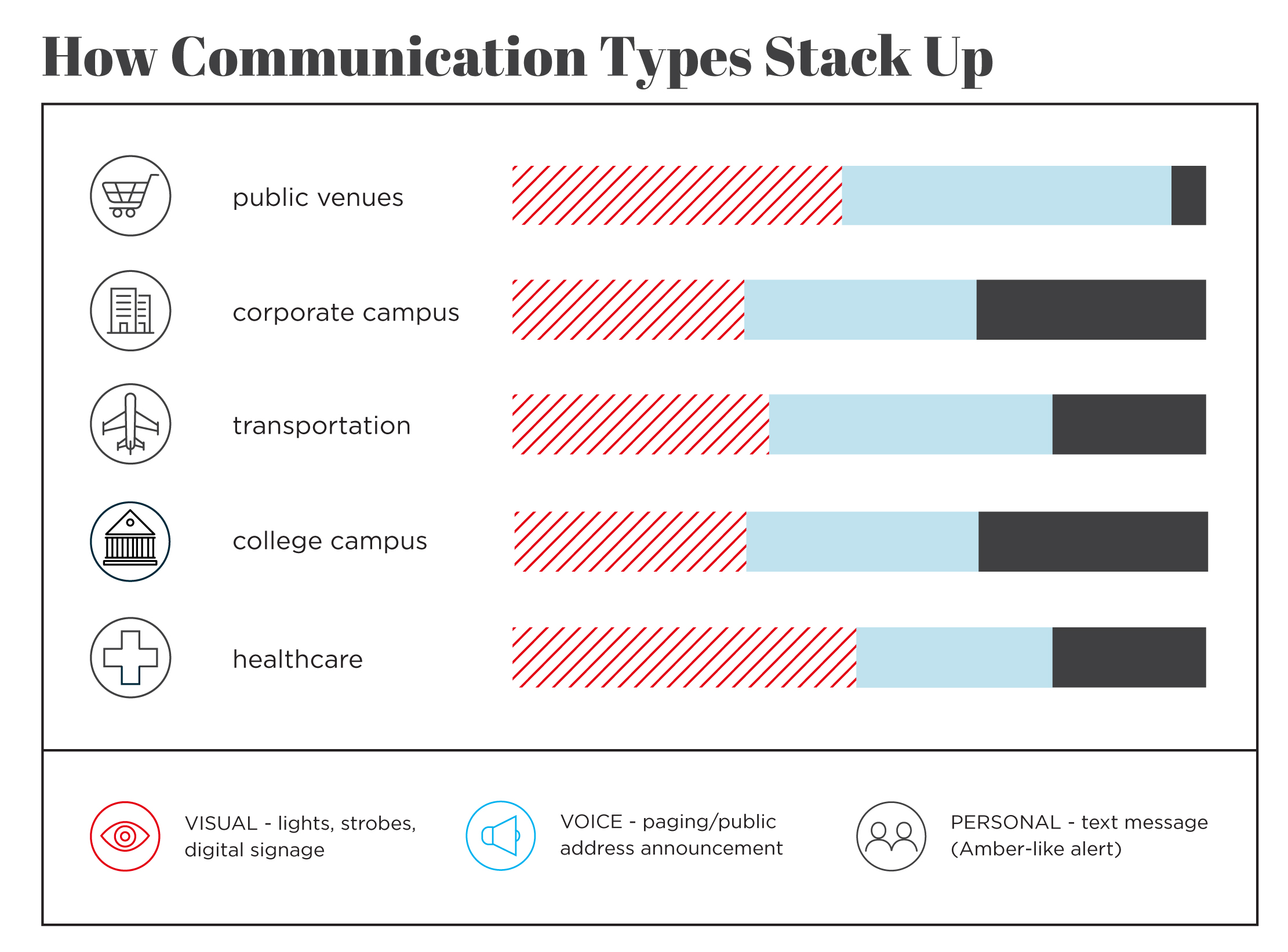Is we discussed in a previous post, emergency communications systems (ECS) continue to evolve, incorporating multiple modes of disseminating information. The modern ECS isn’t just an alarm. Instead, ECS provide a multi-layered platform to more fully inform occupants. These layers consist of visual, voice, and personal notification, and each one has more or less value based on the environment.
Visual is digital signage and strobe lighting. A visual such as strobe lighting only informs people that there’s an urgent condition, but used in conjunction with a digital signage solution or ticker displays and the voice layer, the system can communicate to everyone what the situation is and provide further instruction.
Voice is the verbal message — in the appropriate languages — and alarm notification tones issued by the emergency communications system that communicates what to do in a crisis.
Personal Notification is the layer that sends an email or text message to occupants’ smartphones within a facility or venue. The reliability of cellular networks presents a major obstacle for this layer, particularly when coverage is inadequate. Another challenge is the fact that during emergency situations, the cellular network may be flooded, causing slow delivery or network unavailability. Even cellular quality between networks can vary so greatly that while one person can receive the message in a matter of moments, another person on a different network may receive it too late or not at all.

The emergency communications plan looks at these three layers and defines how they should be used in each environment. For example, if you are in an office building where there’s a clear idea of who’s in the location, these three layers are easy. In public environments such as shopping malls or performing arts centers, it’s harder to pin down who is in the space and the voice and visual layers would receive priority.
Continued technological advances are improving how these layers work together for an integrated solution. At the personal notification layer, for example, technologies such as app-based and location-based services are changing how facilities can push and receive information. In an ECS, location-based technology can be used to determine if a device is in proximity to send it an alarm.
These layers are also advancing the intelligence of emergency communications. In an office building utilizing an access control system, information can be gathered to know who is in the building and in what general area. Security cameras can put eyes on an entire campus to spot when and where an emergency, like a fire, has occurred. These security analytics — both video and access control — provide critical data for planning evacuations.
Want to learn more about Vocia’s advanced capabilities? Check out the full-length article in the June 2016 issue of Component.
